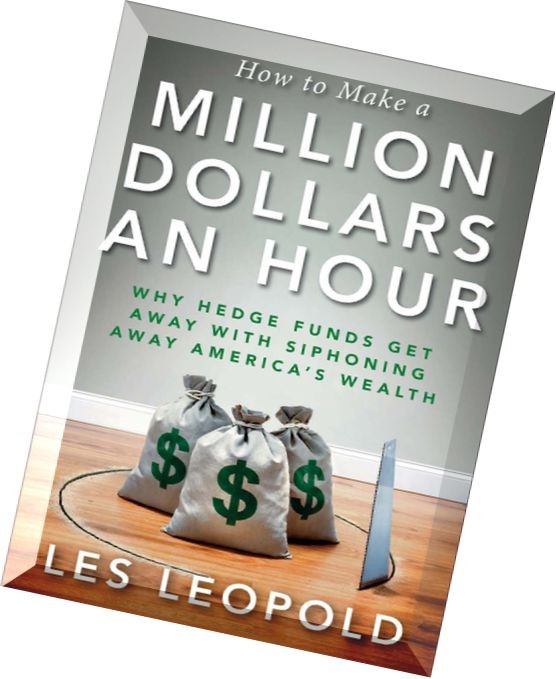How To Build Your Own Hedge Fund
Post on: 12 Июнь, 2015 No Comment

December 25, 2005
If P.T. Barnum were alive today he would be a hedge-fund manager. Who needs suckers to go to the circus when you can collect 1% or 2% of their money per year and 20% or 30% of their winnings from the comfort of your office in Greenwich, Conn. No profits? No problem. Close up shop, reopen under another name, and big institutional investors and wealthy individuals will still throw money at you.
If you want to invest in a hedge fund, there’s no need to bother with these gunslingers. Using mutual funds, you can put together a hedge fund yourself at a lower cost and without having to share your profits. With this personalized approach, you can also manage the fund with taxes in mind. Unlike hedge funds, which may require multiyear lockups or give only intermittent access to the money, you will have immediate liquidity. And mutual funds, while not totally scandal-free, are better regulated.
It’s relatively easy to simulate a classic hedge-fund strategy in which a manager invests a portion of his assets in stocks he likes — the long side of the portfolio — and simultaneously shorts or bets against stocks he doesn’t like. For the long side, you could invest 50% of your hedge fund stash in a well-regarded mutual fund, such as the Fairholme Fund (). Fairholme has a relatively low 1% expense ratio and a 14.82% five-year average annual total return. Then take the other 50% and invest it in one of the 27 short mutual funds available — say, Prudent Bear Fund (), which has a 1.83% expense ratio and a 10.02% five-year number. Combined they have a moderate 1.42% expense ratio and a 12.42% five-year return, which, according to tracker CSFB/Tremont, more than doubles the 5.20% average return for long-short hedge funds for the period ended Oct. 31.
The biggest additional advantage may be for taxable investors. Consider a 50-50 combination of Meridian Growth and Prudent Bear funds. In 2002’s bear market, Prudent Bear was up 62.87% while the Meridian Growth Fund was down 17.82%. Combined, they would have had a 22.53% return. Yet at the end of the year you could have sold your Meridian Growth shares and used the losses to offset any taxable gains in your portfolio. In a long-short hedge fund with the same 22.53% return, you are entirely dependent on the manager to do that for you. This combined-fund strategy is particularly effective because long funds tend to be up when short funds are down, and vice versa. So in 2003’s rally, Meridian gained 47.90% while Prudent fell 10.44% for a combined 18.73%. What’s also important is that in creating your own hedge fund, you can time gains and losses to maximize your tax advantage.
THE BUDDY SYSTEM
Of course, hindsight is 20/20. The Fairholme Fund is a value fund whose investment style has been in favor for the last five years, so its returns combined with a short fund’s look good. Yet such hindsight also applies to the hedge-fund universe. Only their higher fees, not their future performance, are for certain.
What’s more, the sheer number of long equity mutual funds and the growing number of short ones allows you to employ many different hedging strategies. For example, blue-chip stocks have been out of favor in recent years while small caps have soared, and there is evidence that relationship is changing. You could buy the Brandywine Blue Fund (), which, though a top performer in its large-cap growth category, earned an average annualized return of only 1.39% over the past five years, and combine it with ProFunds Short Small Cap Fund (), which shorts the Russell 2000 index of small-cap stocks.

Supposedly, the least risky long-short hedge funds are the market-neutral ones. Such funds are always equally long and short while other hedge funds may vary their positions. In addition, market-neutral funds often match their longs with their shorts. So if a fund has 10% of its assets in auto stocks on the long side, then it will have 10% in auto stocks on the short. That makes the fund’s performance dependent on the manager’s stock picking skills rather than broad industry or market trends.
Such a strategy is harder to replicate with two separate funds because the longs and shorts are chosen by different managers. If you combine a short fund with the Fairholme Fund, you may eliminate some of the bear-market risk to your portfolio, but not the stock-specific risks of the Fairholme Fund, says Rick Lake of Lake Partners Inc. a Greenwich money-management firm that employs hedging strategies. For this reason, Lake prefers long-short mutual funds that hedge internally. Some of those are in the table on page 100. The table also includes funds that practice strategies that are hard to mimic with two separate funds, such as merger arbitrage.
That said, you can come close to a market neutral strategy by sticking to a 50-50 long/short position and finding a suitable match for the short side. Consider a pairing of Masters’ Select Smaller Companies Fund () with the ProFunds Short Small Cap Fund. The Masters’ Select fund parcels out management to five top-performing small-cap fund managers, each of whom chooses 10 to 15 stocks for the fund. The portfolio is diversified by the managers’ different investment styles, making the fund a good match for the diversified ProFunds portfolio.
Another approach is to go long and short in different market sectors. If you use an index short fund, choose one from a different, less promising sector than your long fund. For instance, since the Federal Reserve started raising rates 18 months ago, real estate investment trusts have trounced bank stocks to the point that many market seers consider REITs expensive and banks cheap. So you could pair top-performing bank-stock fund Senbanc Fund () with the ProFunds Short Real Estate Fund (). Think tech stocks are attractive but energy’s best days are behind it? Buy T. Rowe Price Global Technology Fund () and ProFunds Short Oil-Gas Fund (). Do you think that foreign stocks are cheaper than U.S. ones? Combine Oakmark International Fund () and Rydex Ursa Fund (), which shorts the Standard & Poor’s 500-stock index. The number of combinations is limited only by your imagination. There may be plenty of suckers, but you needn’t be one of them.














